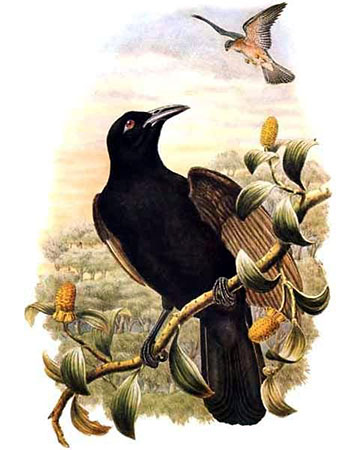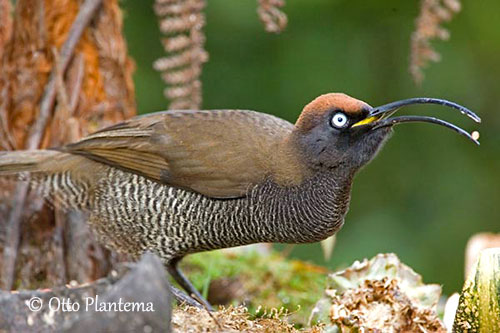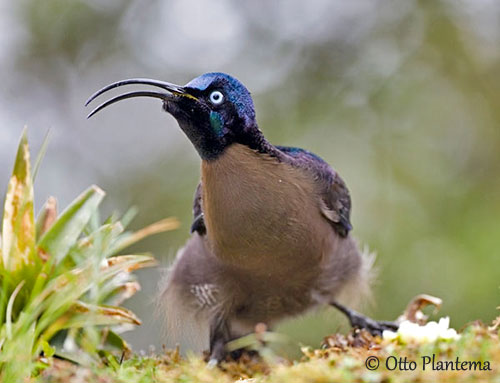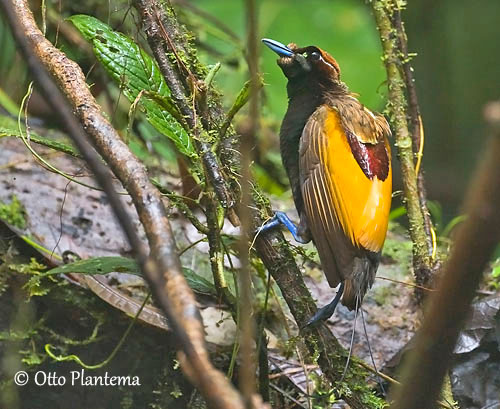
TO BE CONTINUED... Third part Breeding behaviour and courtship displays
Text by Nicole Bouglouan
Photographers:
Jean Michel Fenerole
Photos d’Oiseaux
Otto Plantema
Trips around the world
Dubi Shapiro
Dubi Shapiro Photo Galleries
Illustrations:
Daniel Giraud Elliot (1835 – 1915)
Richard Bowdler Sharpe (1847-1909)
These images and the text are subject to copyright and cannot be used without express authorization from the owners. Legal issues
Sources:
HANDBOOK OF THE BIRDS OF THE WORLD Vol 14 by Josep del Hoyo-Andrew Elliot-David Christie - Lynx Edicions – ISBN: 9788496553507
Birds of Paradise and Bowerbirds De Phil Gregory – Editeur: Bloomsbury Publishing, 2020 – ISBN: 1472975847, 9781472975843 – 416 pages
Les Oiseaux de paradis – Histoire Naturelle et photographies - par Michel Ottaviani - Editions Prin, France – ISBN : 2-909136-40-X
Birds of New Guinea: Second Edition De Thane K. Pratt, Bruce M. Beehler – Editeur: Princeton University Press, 2014 – ISBN: 0691095639, 9780691095639 – 528 pages
Birds of New Guinea: Distribution, Taxonomy, and Systematics De Bruce M. Beehler, Thane K. Pratt – Editeur: Princeton University Press, 2016 – ISBN: 069116424X, 9780691164243 – 672 pages
Book of Curious Birds De Jennifer Cossins – Editeur: Hachette UK, 2021 – ISBN: 073442048X, 9780734420480 – 64 pages
Astonishing Animals: Extraordinary Creatures and the Fantastic Worlds They ... De Tim Flannery – Editeur: Open Road + Grove/Atlantic, 2012 – ISBN: 0802194176, 9780802194176 – 192 pages
Bird: The Definitive Visual Guide De DK – Editeur: Dorling Kindersley Ltd, 2022 – ISBN: 0241596319, 9780241596319 – 512 pages
Birds of the World publié par Jason A. Mobley – Editeur: Marshall Cavendish, 2008 – ISBN: 0761477756, 9780761477754 – 846 pages
The (un)reasonable beauty: What factors shaped the evolution of Paradisaeidae?
CREAGUS@Monterey Bay (Don Roberson)
Fatbirder - The World’s Richest Information Resource about Birds for Birders
Wikipedia, the free encyclopaedia
BIRDS OF PARADISE – Facts and details
Bird of Paradise Symbolism & Meaning
FAMILY PARADISAEIDAE (Second part)
Range, habitat, feeding behaviour, general habits, flight and sounds
Birds-of-paradise, Standardwing, Riflebird, Manucode, Parotia, Paradigalla, Paradise-crow, Crow, Lophorina, Sicklebill and Astrapia
The birds of paradise are mainly found in New Guinea and nearby islands, West Papua, Moluccas and NE Australia.
Some species frequent mountain woodland, lowland savannas or coastal mangroves, but most of them occur in tropical rainforest and at various elevations.
Four species occur in north-eastern Australia where they live in rainforest habitats. These four Australian species are restricted to small remnants rainforest patches. The four species are the Trumpet Manucode of genus Phonygammus and especially the subspecies (P. keraudrenii gouldii), and also the Magnificent Riflebird, the Paradise Riflebird and the Victoria’s Riflebird, all three species in the genus Ptiloris.


Victoria's Riflebird
Ptiloris victoriae
The Paradise Crow (Lycocorax pyrrhopterus) and the Wallace’s Standardwing (Semioptera wallacii) are restricted to the Moluccas. They can be found in lowland, hill and middle montane forests, around 1,000 metres or more of elevation.
The other species occur in Papua New Guinea where they are mainly restricted to tropical closed wet forests, from Wallace’s Line eastwards and then south-eastwards to the east coastal zone of Australia

Halmahera Paradise-crow
Lycocorax pyrrhopterus
Richard Bowdler Sharpe (1847-1909)

Standardwing
Semioptera wallacii
Daniel Giraud Elliot (1835 – 1915)
The Paradisaeidae are not migratory but mainly resident and sedentary. Some very local dispersion may be reported, depending on food availability, drought or fire. They usually remain within small, permanent home range.
They are primarily arboreal species, usually perched in middle and upper levels of the forest. However, some of them may descend to lower levels while foraging in mixed-species flocks.
The Ribbon-tailed Astrapia is known to descend close to the ground or at low level to find the red fruits of wild ginger.
In the Australian species, the Paradise Riflebird and the Victoria’s Riflebird have been sometimes observed foraging on the ground.

The Paradisaeidae show a wide range of body sizes and bill shapes, reflecting a large range of feeding behaviour.
Most of them are frugivorous, but they also feed on arthropods. However, some species such as the Black-billed Sicklebill and the Superb Lophorina are primarily insect-eaters.

Black-billed Sicklebill
Drepanornis albertisi
Richard Bowdler Sharpe (1847-1909)
The fruit-eaters search for food in fruiting trees, shrubs, vines and plants and are usually seen in the canopy. These species are non-territorial and do not defend their feeding areas, unlike their display sites. They tend to be found in small groups and foraging flocks.
On the other hand, the insect-eaters with more sedentary lifestyle, maintain their territories. They are more solitary, feeding by probing and gleaning in bark and foliage, at middle level or in forest canopy.
Some species also take small vertebrates such as frogs, skinks (lizards belonging to the family Scincidae), flowers and nectar. They also may eat some leaves.


They use their feet to hold and manipulate the food items. If the fruit is not swallowed whole, they extract the nutritional content from it. They usually pluck fruit while perched and rarely in flight. They do not digest the seeds, and are good dispersers of seeds in Australia and New Guinea.
However, the manucodes use a different and more generalised strategy of upright gleaning among the vegetation, twigs and foliage, which is unusual for large species like these.

The riflebirds cling to trunks and branches, thanks to their powerful feet and claws. They use their long, decurved bill to probe and tear bark in rotten wood. They also may use the partially opened bill to probe into soft wood and debris.

Magnificent Riflebird
Ptiloris magnificus
The sicklebills use the bill to probe among pandan leaves (Genus Pandanus in Pandanaceae family). The Black-billed Sicklebill may also open the bill wide and use just the lower mandible to probe into very small holes.

Several bird-of-paradise species are present in mixed foraging flocks in the lowland and hill forests in New Guinea. Within these flocks, the males call regularly to maintain the flock cohesion. This behaviour is also an anti-predator strategy, as many pairs of eyes, including those of sentinel species, allow individuals to maximize the time spent in foraging.
Fights and chases may sometimes occur if a male overlaps the foraging territory of another.
Most Paradisaeidae species have powerful bill and feet, and are able to use them against their natural predators such as Birds of Prey, mainly hawks including Accipiter species, and snakes, especially pythons.
They are shy birds, difficult to observe. They are often localised by their calls and songs as the breeding males are calling from favoured sites. They produce loud and harsh vocalizations often described as corvid-like, and rarely as beautiful songs.
Adult males and females of both manucodes and Paradise Crows are monogamous and call regularly, especially the Trumpet Manucode which has large repertoire with some sex-specific calls and racial variations.
However, in the polygynous species, only the male produces vocalizations such as loud, regular advertisement calls audible at 1-2 kilometres, whereas the females remain silent, except when alarmed. But the very similar plumages of females and young males are sometimes a problem, as the young males are quite vocal in order to learn their future repertoire.


While displaying and hanging upside-down, the Blue Bird-of-paradise gives unusual display calls, especially when the female approaches. Then we can hear a vibrating, electronic-sounding series lasting 25-30 seconds, followed by quiet “kar” and “kwaah” notes. These sounds are heard during the intense phase of the displays.

The King of Saxony Bird-of-paradise gives a strange, complex “fizzing” rattling series sounding like radio-static. From some observations, the male might have incorporated the calls of smaller passerines into its courtship subsong, the latter being softer and less well defined than the usual territorial song.

The male Brown Sicklebill is well known for its advertising call, a “machine-gun” chatter given in two bursts “TAT-AT-AT, TAT-AT-AT” audible at distance of up to two kilometres.
The male Black Sicklebill vocalizes during courtship, whereas the male Pale-billed Sicklebill gives a bill-rattle.

During the displays, the males of genus Paradisaea are relatively quiet, sometimes giving just a few brief soft notes, but accompanied in some species by a sharp clicking sound produced with their mandibles, also made by the Magnificent Bird-of-paradise.

The manucodes also emit odd calls. The Glossy-mantled Manucode gives a rising call similar to the sound made by a tuning fork. But the manucodes have elongate and coiled trachea that produces unique low tremulous notes, and these sounds carry through the dense forest habitat.

Various other non-vocal sounds are also produced by the displaying males, and may act as auditory advertisement. We can hear wing-beating, bill-rattling, primary rustling and wing-snapping. Several members of genus Paradisaea produce loud, cracking or snapping sounds by repeatedly beating the carpal joints and producing a softer audible thud.
The riflebirds make an elaborate and vigorous use of their highly modified wings during the displays, involving remarkable modifications of component feather shape and texture, producing loud and characteristic noises during some phases of their displays.

While moving over long distances, they use a typical undulating flap-and-glide action. The wings are held closed against the body during upwards movements, interspersed with bouts of flapping. The wings of several males produce a characteristic sound during the flapping phase. Both production and volume of these sounds are controlled by some polygynous males during the flight and aerial flights around the display court.
Both the Magnificent Bird-of-paradise and the Wilson's Bird-of-paradise make a sharp and clear clacking noise while flying about their courts.

The Paradisaeidae are found almost exclusively in humid forest habitats where they frequent forest pools and flooded tree knotholes to drink and bathe. But they may also come to artificial pools in gardens during period of drought. Preening generally follows bathing.
But when the breeding season comes, the males go wild and offer the females magnificent, noisy and colourful displays, but very different depending on the species.
This is what we will discover in the third part of this study.